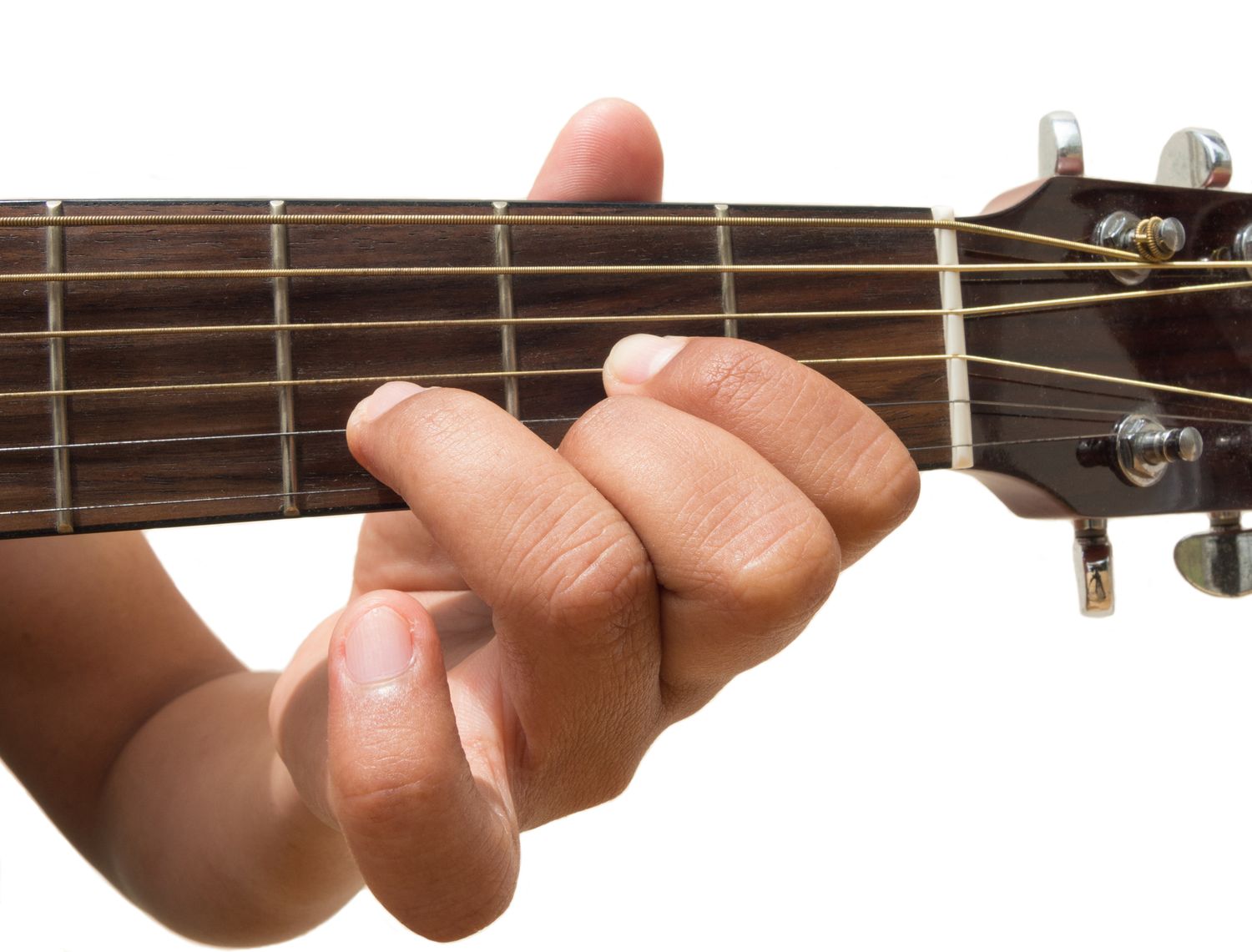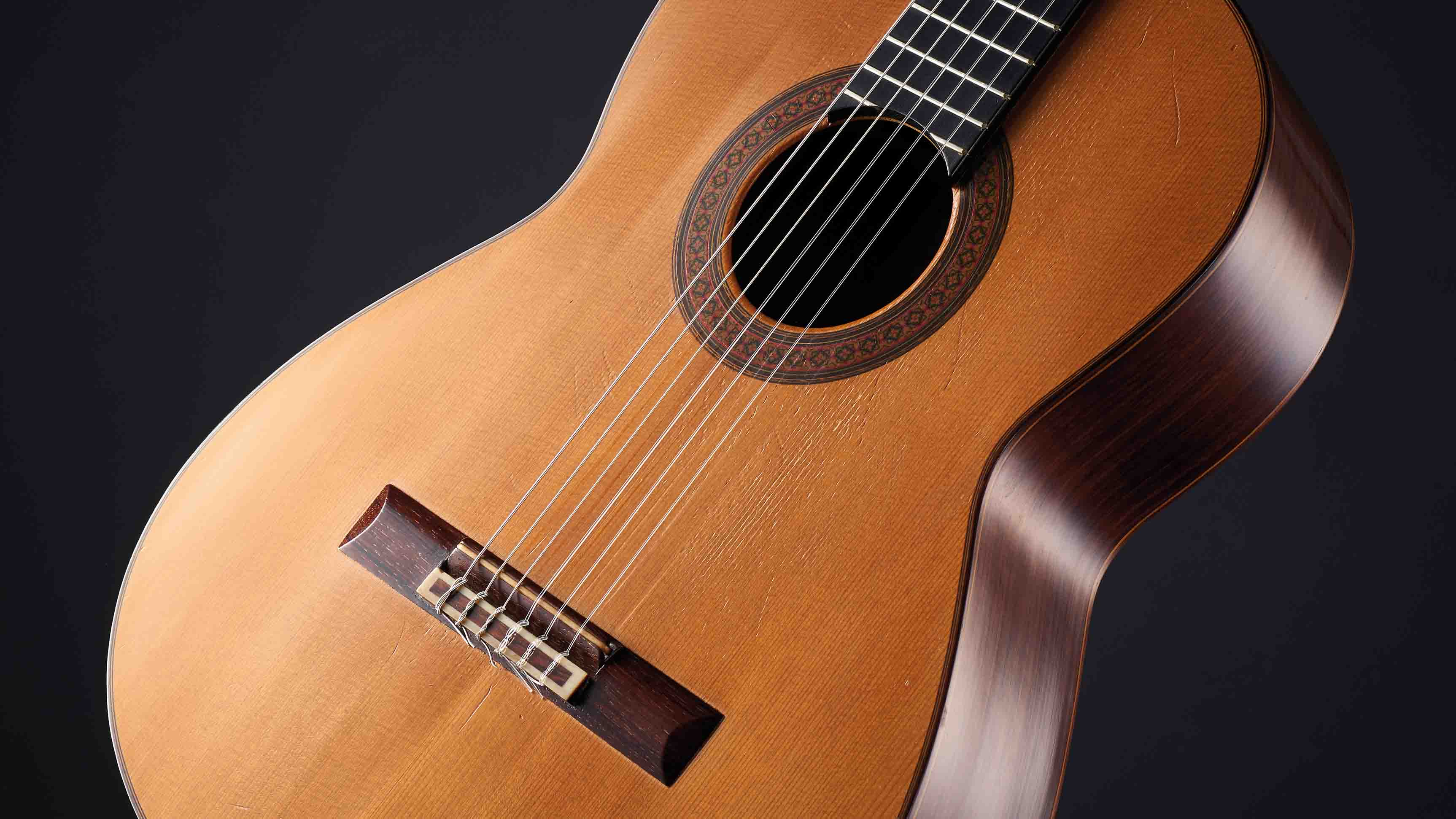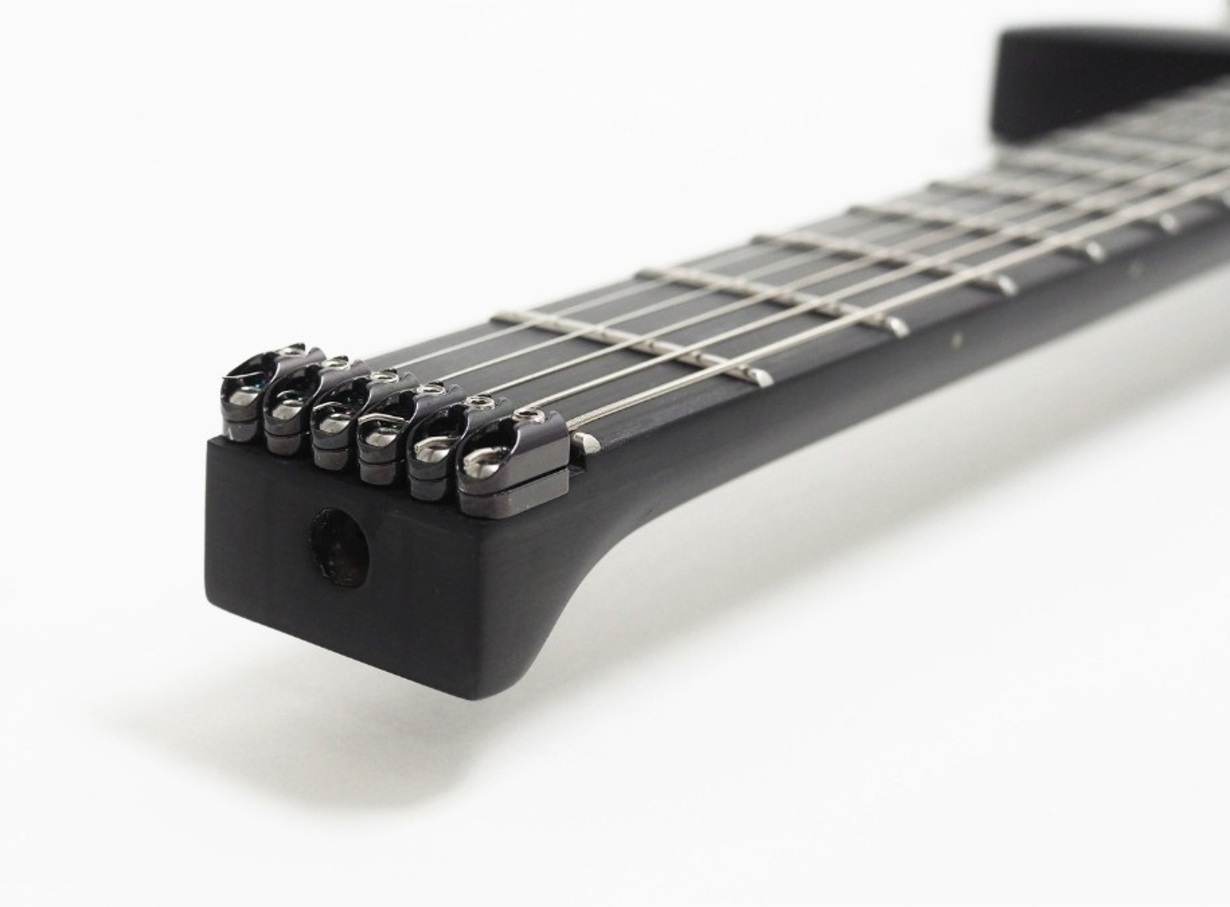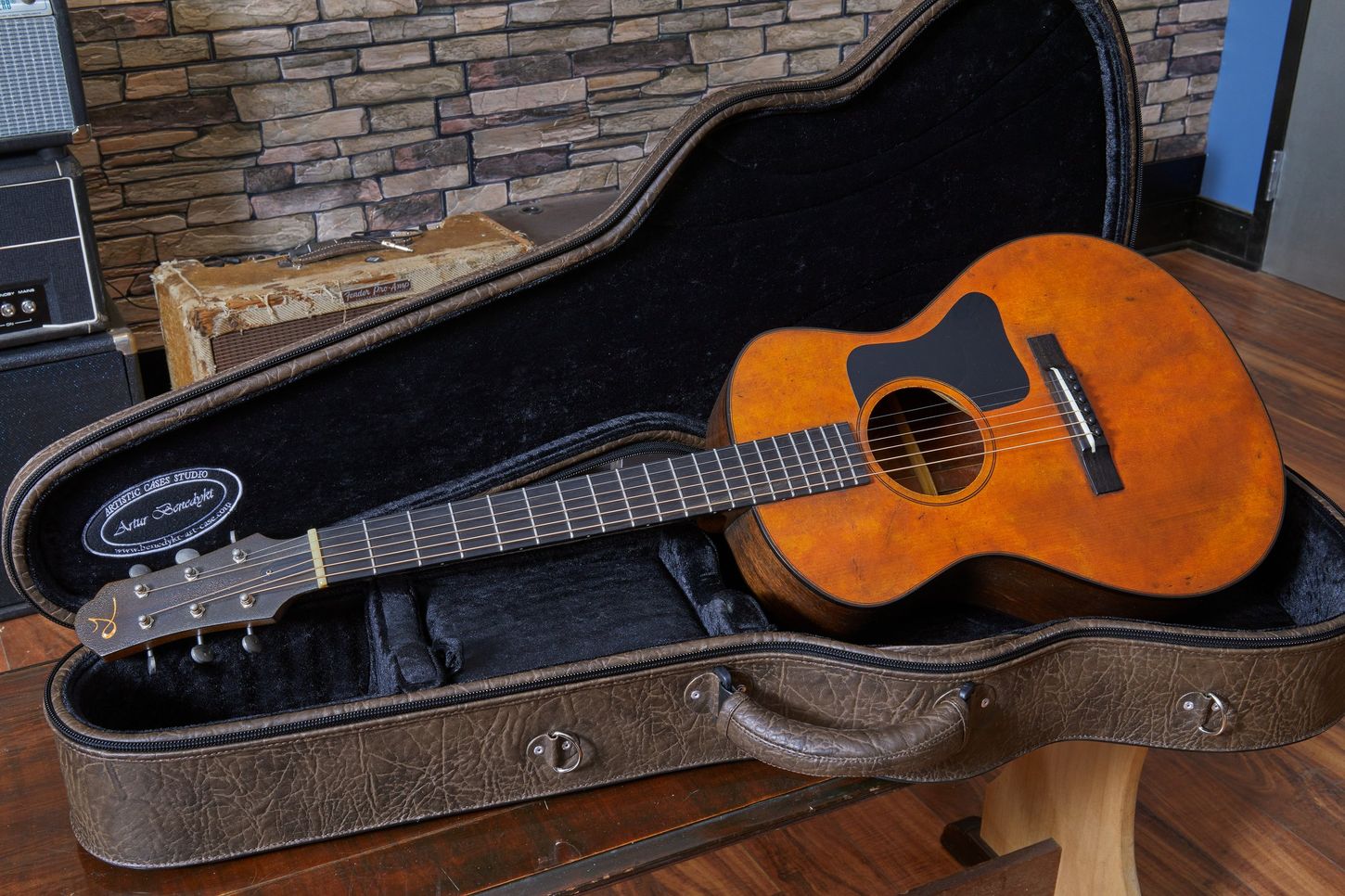Home>Production & Technology>Acoustic>How To Tune Acoustic Guitar To Drop D


Acoustic
How To Tune Acoustic Guitar To Drop D
Published: March 11, 2024
Learn how to tune your acoustic guitar to Drop D with our step-by-step guide. Get ready to explore new sounds and expand your musical repertoire.
(Many of the links in this article redirect to a specific reviewed product. Your purchase of these products through affiliate links helps to generate commission for AudioLover.com, at no extra cost. Learn more)
Table of Contents
Introduction
Tuning an acoustic guitar to Drop D opens up a world of sonic possibilities, allowing for rich, resonant tones and enhanced versatility in playing various musical genres. Whether you're a seasoned guitarist or just starting out on your musical journey, understanding and mastering Drop D tuning can significantly expand your creative repertoire. This alternative tuning configuration involves lowering the pitch of the lowest string, resulting in a deeper, more robust sound that adds depth and complexity to your music.
Drop D tuning has been embraced by musicians across diverse genres, from folk and blues to rock and metal. Its popularity stems from the unique harmonic qualities it imparts to the instrument, enabling players to explore new chord voicings, create captivating riffs, and experiment with dynamic melodic structures. By delving into the intricacies of Drop D tuning, you can unlock a wealth of expressive possibilities and elevate your acoustic guitar playing to new heights.
In this comprehensive guide, we will delve into the nuances of Drop D tuning, providing you with a step-by-step approach to achieve this configuration on your acoustic guitar. Additionally, we'll explore valuable tips for maintaining the integrity of Drop D tuning, ensuring that your instrument remains in optimal condition for seamless performance. Whether you're drawn to the raw, earthy resonance of folk music or the electrifying energy of rock anthems, mastering Drop D tuning will empower you to infuse your music with a captivating depth and richness that resonates with listeners.
As we embark on this journey into the realm of Drop D tuning, prepare to immerse yourself in the artistry and technical finesse that define the acoustic guitar. By the end of this guide, you'll possess the knowledge and skills to confidently tune your acoustic guitar to Drop D, opening up a world of sonic exploration and creative expression. Let's embark on this musical odyssey and unlock the boundless potential of Drop D tuning for your acoustic guitar.
Understanding Drop D Tuning
Drop D tuning is a popular alternative tuning method that involves lowering the pitch of the lowest string on the acoustic guitar from E to D. This adjustment creates a rich, resonant sound and offers a myriad of creative possibilities for guitarists across various musical genres. By understanding the fundamental principles of Drop D tuning, you can harness its unique sonic characteristics to elevate your playing and expand your musical horizons.
One of the defining features of Drop D tuning is the enhanced depth and richness it imparts to the guitar's tonal palette. By lowering the lowest string to D, the instrument resonates with a deeper, more robust timbre, adding a captivating dimension to chords, melodies, and riffs. This alteration not only enriches the sonic texture of the guitar but also provides a platform for exploring new harmonic structures and voicings, enabling players to craft evocative musical landscapes.
In Drop D tuning, the lower pitch of the sixth string facilitates the effortless formation of power chords, a hallmark of rock and metal music. This configuration empowers guitarists to create thunderous, full-bodied power chords with minimal finger positioning, unleashing a potent sonic force that underpins intense, high-energy compositions. Additionally, the lower tension on the string in Drop D tuning facilitates fluid, expressive bends and opens up avenues for dynamic melodic phrasing, enhancing the guitar's capacity for emotive storytelling through music.
Furthermore, Drop D tuning serves as a gateway to exploring diverse musical genres, from folk and blues to alternative rock and metal. Its versatility enables guitarists to adapt their playing style to suit a wide range of musical expressions, from soulful, introspective ballads to adrenaline-fueled anthems. This adaptability underscores the significance of Drop D tuning as a transformative tool for shaping the sonic identity of the acoustic guitar and amplifying its emotive impact.
By comprehending the intricacies of Drop D tuning, guitarists can harness its inherent resonance and versatility to infuse their music with depth, power, and emotional resonance. This alternative tuning configuration transcends conventional boundaries, inviting players to embark on a sonic exploration that transcends the limitations of standard tuning. As we delve into the practical aspects of tuning the acoustic guitar to Drop D, it's essential to appreciate the profound impact this tuning method can have on your musical journey, enriching your playing and empowering you to unleash the full expressive potential of the instrument.
Steps to Tune Acoustic Guitar to Drop D
Tuning an acoustic guitar to Drop D involves a straightforward yet transformative process that unlocks a wealth of sonic possibilities. By following these step-by-step instructions, you can seamlessly transition your acoustic guitar to Drop D tuning, harnessing its rich, resonant sound to elevate your musical expression.
-
Prepare Your Guitar: Begin by ensuring that your acoustic guitar is in optimal condition. Check the overall tuning stability and make any necessary adjustments to the tuning pegs to guarantee smooth and precise tuning.
-
Loosen the Sixth String: To initiate the transition to Drop D tuning, start by loosening the tension of the sixth string, which is typically tuned to E. Gradually turn the tuning peg for the sixth string counterclockwise, gently reducing the tension until it reaches the desired D pitch.
-
Use a Tuner for Precision: Employ a reliable electronic tuner to accurately gauge the pitch of the sixth string as you lower it to D. This ensures precision in achieving the desired tuning and enhances the overall tonal integrity of the instrument.
-
Verify the Pitch: Once the sixth string is tuned down to D, verify the pitch using the tuner to confirm that it aligns with the designated note. This step is crucial for achieving the correct pitch and maintaining the harmonic balance of the guitar in Drop D tuning.
-
Fine-Tune the String: After confirming the D pitch, fine-tune the sixth string by ear, listening for any subtle variations in pitch and making minor adjustments as needed to achieve optimal tonal clarity and resonance.
-
Check Intonation: Assess the intonation of the sixth string by playing fretted notes across the fretboard and ensuring that the pitch remains consistent and in tune. Make any intonation adjustments on the guitar bridge if necessary to optimize the string's harmonic accuracy.
-
Test Chord Voicings and Riffs: Once the acoustic guitar is tuned to Drop D, explore the newfound sonic landscape by experimenting with chord voicings, melodic patterns, and dynamic riffs. Embrace the enhanced depth and resonance of Drop D tuning to unleash your creativity and explore fresh musical avenues.
By following these meticulous steps, you can effectively tune your acoustic guitar to Drop D, unlocking a world of expressive potential and imbuing your music with a captivating depth and richness that resonates with listeners. Embrace the transformative power of Drop D tuning and embark on a musical journey that transcends conventional boundaries, amplifying the emotive impact of your acoustic guitar playing.
Tips for Maintaining Drop D Tuning
Maintaining Drop D tuning on your acoustic guitar is essential for preserving the integrity of this alternative tuning configuration and ensuring consistent, resonant performance. As you delve into the sonic realm of Drop D tuning, incorporating these practical tips into your guitar care routine will help sustain the optimal pitch and tonal richness of this distinctive tuning.
-
Stable String Tension: Given the lower pitch of the sixth string in Drop D tuning, it's crucial to select high-quality strings that offer reliable tension and durability. Opt for strings specifically designed for alternate tunings to maintain consistent tension, minimize string slippage, and uphold the stability of Drop D tuning.
-
Regular Tuning Maintenance: Due to the altered tension on the sixth string in Drop D tuning, it's advisable to check and readjust the tuning regularly. Fluctuations in temperature and humidity can impact string tension, potentially affecting the pitch of the tuned-down sixth string. By routinely monitoring and fine-tuning the guitar's tuning, you can sustain the harmonic balance of Drop D tuning.
-
Nut and Bridge Lubrication: To facilitate smooth string movement and minimize friction at the nut and bridge, consider applying a small amount of graphite or specialized lubricant to these contact points. This preventive measure reduces the risk of string binding and ensures seamless tuning stability, particularly for the lower-tuned sixth string in Drop D configuration.
-
Intonation Adjustment: Periodically assess the intonation of the acoustic guitar in Drop D tuning to verify the accuracy of fretted notes across the fretboard. If intonation discrepancies arise, make precise adjustments to the saddle position at the bridge to optimize the harmonic alignment of the strings, promoting tonal clarity and accurate pitch reproduction.
-
String Care and Replacement: Given the unique demands of Drop D tuning, prioritize regular string maintenance and replacement to uphold tonal integrity. Strings exposed to lower tension may exhibit accelerated wear, affecting their ability to maintain pitch stability and tonal clarity. By replacing strings at appropriate intervals, you can sustain the resonant quality of Drop D tuning.
-
Humidity Control: Maintain a stable humidity level in the guitar's environment to mitigate the impact of moisture fluctuations on string tension and overall tuning stability. Utilize a humidifier or dehumidifier as needed to safeguard the acoustic guitar against adverse humidity conditions, preserving the tonal consistency of Drop D tuning.
By integrating these maintenance tips into your guitar care regimen, you can uphold the harmonic integrity and tonal richness of Drop D tuning, ensuring that your acoustic guitar resonates with captivating depth and expressive clarity. Embrace the artistry and technical finesse of maintaining Drop D tuning, empowering your musical journey with a steadfast commitment to preserving the resonant allure of this alternative tuning configuration.
Conclusion
In conclusion, the journey into the realm of Drop D tuning for acoustic guitar has unveiled a tapestry of sonic exploration and creative expression. By embracing the transformative power of Drop D tuning, guitarists can transcend conventional boundaries and infuse their music with a captivating depth and richness that resonates with listeners. The process of tuning an acoustic guitar to Drop D, as outlined in this guide, serves as a gateway to unlocking a myriad of expressive possibilities and expanding the instrument's sonic palette.
As the lowest string is lowered to D, the acoustic guitar resonates with a deeper, more robust timbre, enhancing the harmonic richness of chords, melodies, and riffs. This alternative tuning configuration empowers guitarists to explore new chord voicings, create dynamic melodic structures, and craft evocative musical landscapes. Whether delving into the raw, earthy resonance of folk music or channeling the electrifying energy of rock anthems, Drop D tuning offers a versatile platform for shaping the sonic identity of the acoustic guitar.
Furthermore, the practical tips for maintaining Drop D tuning underscore the commitment to sustaining the optimal pitch and tonal integrity of this distinctive tuning. From selecting high-quality strings designed for alternate tunings to implementing regular tuning maintenance and intonation adjustments, these measures ensure that the resonant allure of Drop D tuning remains steadfast, enriching the acoustic guitar's expressive clarity and harmonic balance.
As guitarists embark on their musical odyssey with Drop D tuning, they are poised to explore diverse musical genres, adapt their playing style to suit various expressions, and unleash the full expressive potential of the instrument. The artistry and technical finesse of maintaining Drop D tuning underscore a steadfast commitment to preserving the resonant allure of this alternative tuning configuration, elevating the acoustic guitar's capacity for emotive storytelling through music.
In essence, the journey into Drop D tuning transcends the realm of technical adjustments, resonating as a profound artistic endeavor that amplifies the emotive impact of acoustic guitar playing. By mastering Drop D tuning, guitarists can harness its inherent resonance and versatility to infuse their music with depth, power, and emotional resonance, forging a profound connection with their audience through the captivating allure of Drop D-tuned acoustic guitar.











